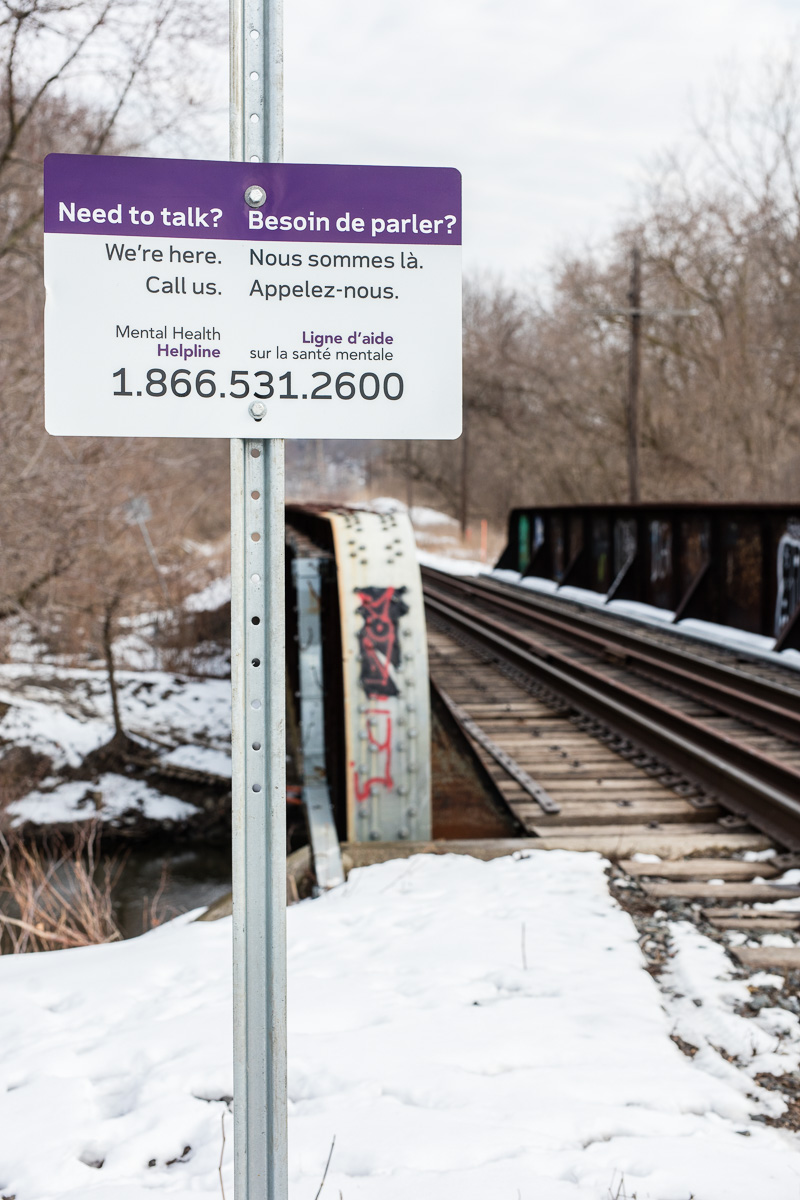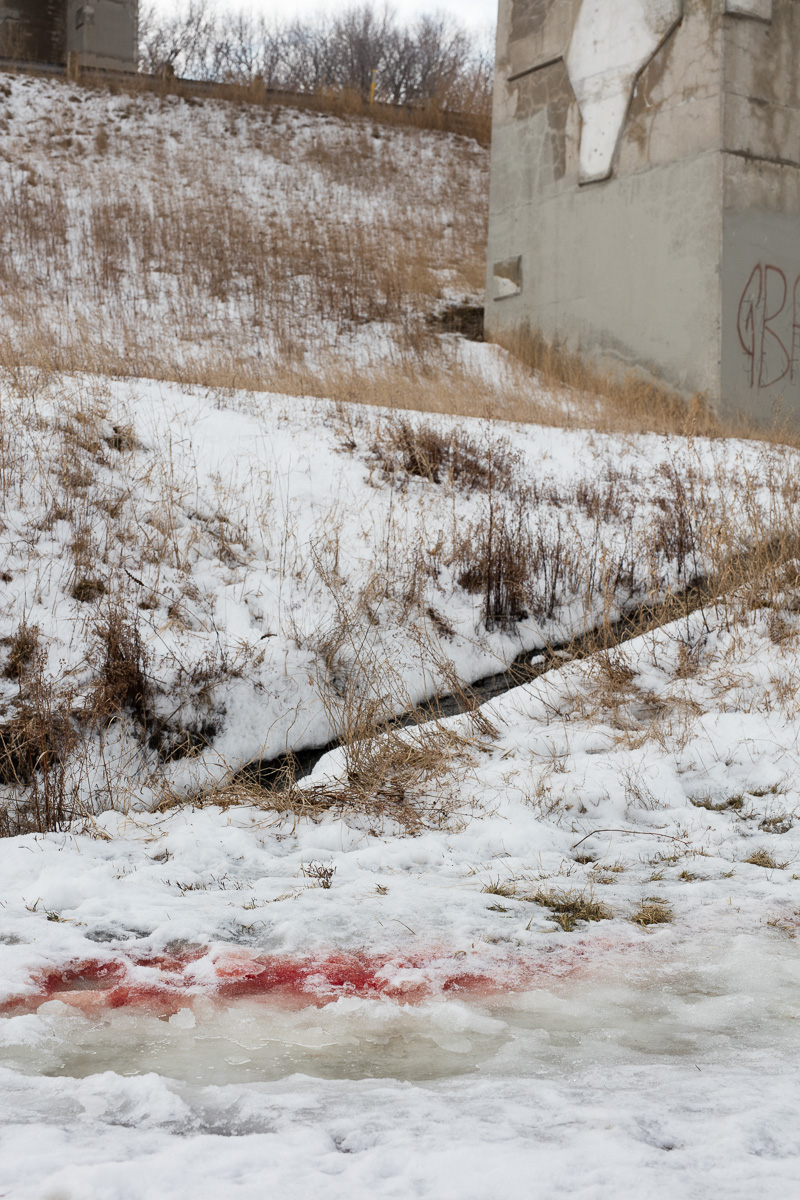I think our neighbour has killed himself. Nobody who knows will talk about it, but it seems likely.
We drive home around dinner time and have trouble getting into our building. Police cars block the entrance. An ambulance sits on the sidewalk by a stretch of yellow tape. Our building superintendent is talking to the police. The building manager sends an email message advising us of a police investigation on the premises, but we aren’t to be alarmed; there’s no danger. Later, we leave to go out for the evening and three police officers exit the unit across the hall from us. It belongs to an elderly man who has always struck me as lonely and reclusive. Seeing the police, we know what to think. When we return home from dinner, the night concierge is already on the desk. He isn’t allowed to say anything, but they sent the evening concierge home, told him to take some time off.
There must be something in the air. It’s been a long dull winter without the fluffy decorative cheer that snow brings. We hear in the news how a woman stabs the concierge at a nearby building as he helps her move some boxes. She flees and ends up on the balcony of a 27th floor apartment in another building. Police rappel from the balcony above to capture (rescue?) her. The media identify her as an “internationally renowned architect and philanthropist.” It is implied that her outburst is the result of a mental health issue. The woman is held on a suicide watch. The media interview a friend (she’s a “remarkable woman”), a man who, it turns out, designed the Luminous Veil, the Bloor Street Viaduct’s suicide prevention barrier. The woman in question was instrumental in promoting the barrier and raising funds for it.

I walk through Crother’s Woods and out to the level crossing (at the 4.93 mile marker) in the Don Valley where the Go Trains pass during rush hour. They’ve put up a new sign for the Mental Health Helpline. It makes me wonder about the Luminous Veil. Does it really prevent suicide? Or does it offload suicide to other sites? I’ve heard plausible claims by experts on both sides of the debate. But ultimately these are unanswerable questions. There’s no way to develop a controlled test.

I walk north to the Millwood Road Bridge. It crosses the same terrain as the Bloor Street Viaduct, but it doesn’t have a suicide prevention barrier. Underneath, I find a couple memorials—flowers and candles—set out on the damp ground. There are still patches of ice and snow, but the weather has turned warm and they’ll be gone soon. One of the patches reminds me of a Big Gulp cherry slushy. I remark to myself: “Oh, that looks like a cherry slushy.” Then I realize what it is. A dog appears and licks at it. The owner yells at the dog to get away from there and they keep walking south to the level crossing and the Viaduct.

Another unanswerable question is: does talking about suicide help? When you consider other taboo subjects, experience suggests that absolute prohibitions produce unintended consequences that are worse than the prohibited behaviour. Sexual taboos produce abortion deaths. Alcohol and drug prohibitions produce organized crime violence. Does an absolute silence around suicide produce more suicide deaths? Can talking about it function like a pressure release valve? Again, there’s no way to develop a controlled test.
Maybe it depends on the kind of talking. A couple years ago, Jennifer Michael Hecht published Stay: A History of Suicide and the Philosophies Against It. While one might suppose that a book like this would help make a taboo subject less tabooish (tabooey?), I found quite the opposite. The book is an extended plea to, uh, stay. It places an absolute value on life, and, as a result, discourages any kind of empathic reach into the space occupied by people who don’t share that certitude. Implicitly, it denies the validity of the feelings that lie at the very heart of a person’s ontological struggle. But no one wants to be told that their feelings don’t count.

We who stay get to colonize the memories of those who have gone. We get to make pronouncements that go unchallenged. We get to judge the moral quality of their actions without having to think too closely about our statements. We get to call them foolish. Or selfish. What we don’t get to do is enter into the mental space of a person at the moment of death. We presume psychic pain because we know depressed people who have experienced a great deal of psychic pain and depression is sometimes a precursor to suicide. Or we presume confusion. Or shame. But we don’t know with certainty.
I’ve been kneeling to photograph the patch of cherry slushy. As I rise, I notice that my fingers are missing. It happens this way every year. When the weather turns warm, I get migraine headaches in clusters. I assume it has something to do with sudden changes in air pressure. The migraines wipe me out. A bad one can send me to the hospital. They feel like the end of the world. I take a squirt of Imitrex and pack up my gear. I need to get moving before the flashing lights start up in my head. There really is something in the air.
